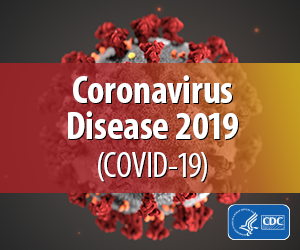The leave provisions of the Families First Coronavirus Response Act (“FFCRA”) take effect tomorrow, April 1, 2020. In preparation, there is additional guidance as to four common inquiries.
1. The FFCRA provides emergency paid sick leave for employees who are unable to work due to a quarantine or isolation order from the federal, state or local government. Does this provision require leave due to the various “stay-at-home” orders we are seeing across the country?
No. Per the DOL: If your employer “closes your worksite for lack of business or because it was required to close pursuant to a Federal, State or local directive,” employees are not eligible for emergency paid sick leave. See https://www.dol.gov/agencies/whd/pandemic/ffcra-questions (Question #24).
2. Does the FMLA expansion require an additional 12 weeks of FMLA leave?
No. For employers who were already subject to the FMLA and now are subject to the FFCRA, “eligibility for expanded family and medical leave depends on how much leave you have already taken during the 12-month period that your employer uses for FMLA leave. [An employee] may take a total of 12 workweeks for FMLA or expanded family and medical leave reasons during a 12-month period.” See https://www.dol.gov/agencies/whd/pandemic/ffcra-questions (Question #44, emphasis supplied).
3. If an employer provided FFCRA leave after the act was signed into law but before April 1, 2020, can that employer apply for the tax credits to offset payment for this leave?
No. Per IRS Notice 2020-21, the tax credits will only be available with respect to qualified sick leave wages and qualified family leave wages required to be paid under the FFCRA for the period beginning on April 1, 2020 and ending on December 31, 2020. The tax credits are not available for paid sick leave/qualified family leave paid for time periods prior to April 1, 2020. See https://www.irs.gov/pub/irs-drop/n-20-21.pdf.
4. What if an employer has fewer than 50 employees? Has there been any additional guidance as to whether that employer must comply with the FFCRA’s requirements for leave due to school or place of care closures or child care provider unavailability for COVID-19 related reasons?
Yes, but no specific procedure yet identified. Per the DOL: “a small business may claim this exemption if an authorized officer of the business has determined that:
1.The provision of paid sick leave or expanded family and medical leave would result in the small business’s expenses and financial obligations exceeding available business revenues and cause the small business to cease operating at a minimal capacity;
2.The absence of the employee or employees requesting paid sick leave or expanded family and medical leave would entail a substantial risk to the financial health or operational capabilities of the small business because of their specialized skills, knowledge of the business, or responsibilities; or
3.There are not sufficient workers who are able, willing, and qualified, and who will be available at the time and place needed, to perform the labor or services provided by the employee or employees requesting paid sick leave or expanded family and medical leave, and these labor or services are needed for the small business to operate at a minimal capacity.”
See https://www.dol.gov/agencies/whd/pandemic/ffcra-questions (Question #58).
Until specific reporting requirements are established, any small business seeking to use this exemption should (a) first make the determination as to whether any of the above criteria are satisfied; and (b) create a contemporaneous record of that determination.
For more information on the FFCRA, see our previous alerts:
If you have any questions regarding the content above, please contact a member of your Benesch team.
Johanna Fabrizio Parker at jparker@beneschlaw.com or 216.363.4585.
Corey Clay at cclay@beneschlaw.com or 216.363.4158.
***
Please note that this information is current as of the date of this client bulletin, based on the available data. However, because COVID-19’s status and updates related to the same are ongoing, we recommend real-time review of guidance distributed by CDC and local officials.

